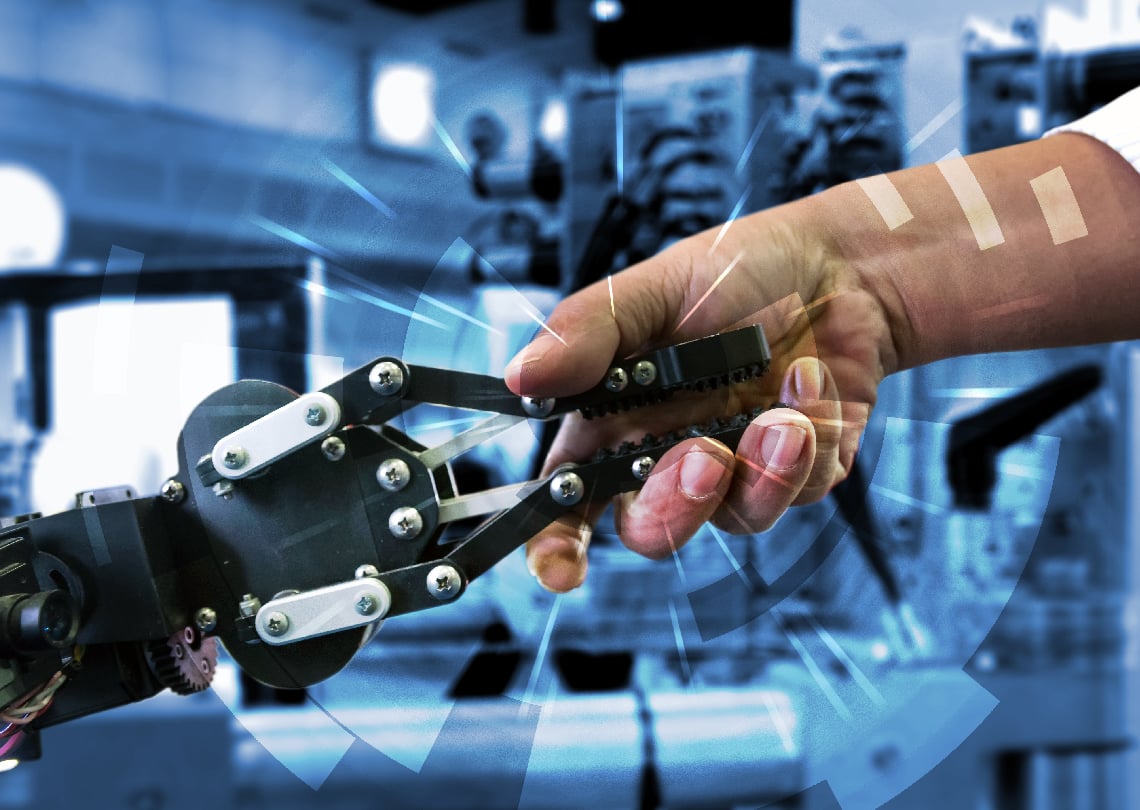Industry 4.0: Making Automation a Positive Outcome for Employees

As we sit on the cusp of the next industrial revolution, we will all experience the chaos and excitement of transition and change. Industry 4.0 is upon us – and business innovators are looking to take advantage of competitors that are slower and more reluctant to address change. Others are sitting tight. Are you sitting on the fence right now?
The ‘wait and see’ attitude is not surprising. Change is painful and comes with risk. Replacing legacy infrastructure and equipment can be eye-wateringly expensive for any CFO to contemplate and is an example of why businesses are sometimes hesitant to embrace change.
With headlines like “Automation a threat to 69 percent jobs in India: World Bank”, “Foxconn replaces ‘60,000 factory workers with robots’”, “China is spending billions to develop an army of robots to turbocharge its economy” and “Robot automation will 'take 800 million jobs by 2030'”, another politically and socially sensitive barrier is the unrest of millions of people globally who feel they may be replaced by robots and machines.
The world’s social and economic order will undergo serious change in the next couple of decades. What will happen? Will workers storm the robot factories? Return to the land to take up traditional farming activities? Form resistance movements against this new automated world? Only time will tell.
Businesses need to look to mitigate the risk and unrest that change can bring. At the same time, they need to embrace change to compete. Or they will fail.
Question: How can you automate, optimising efficiency and productivity, without doing away with peoples’ jobs?
Question: Can you be an innovator, an early adopter, AND be socially and politically sensitive? Your success may rely in you being able to do exactly this – or you may be one of the businesses that people will be demonstrating against!
I work for a technology company that automates cash processes. But whether you are a technology provider, or a technology adopter, new solutions need to align with many stakeholders and multiple business considerations. Solving one business problem may inadvertently create others – like employee uncertainty. And that is why it is important to think through the business impact of your technology adoption, taking in all aspects of your business and to communicate the benefits clearly to all.
For businesses who are nervous about the impact on their employees of cash technology solutions I have a clear message: You have an opportunity to use automation to create a very positive outcome for your workforce.
By up-skilling them.
And this is at the heart of making the transition to an automated future a positive one for all. Take the opportunity to transition both your processes and your employees, to best prepare your business for the future.
Why? Commercially there is little value to a business’s bottom line from an employee whose job is predominantly transactional. Turn a transactional, or part-transactional job function, into a revenue generating function, and a more valuable role within your organisation. Train and empower your workforce to use their face-to-face time to better engage with the customers about your products or services. For example,
Bank Tellers – Have to count money before they hand it over / pay it out, which distracts these valuable assets from asking “when can we review your mortgage?”
Retail Shop Assistants – have to manage change, when they could be asking “Would you like 1 year’s insurance with that item?”
Customer Experience. It’s the new battlefield. According to a Walker study, by the year 2020 customer experience will overtake price and product as the key brand differentiator. Highly engaged customers buy more, promote more, and demonstrate more loyalty.
So, be they bank tellers, hotel staff, supermarket assistants or retail workers, give your employees the tools to help you maximise your revenue. Take away the burden and distraction of manual cash handling and give them more time to engage with customers. And the training to do this well. It will add more value to your business, and your workforce can work with you and not just for you to achieve your business goals.
“People want guidance, not rhetoric. They need to know what the plan of action is and how it will be implemented. They want to be given responsibility to help solve the problem and the authority to act on it.” ~Howard Schultz, Starbucks
The world is changing. Adopting technology solutions does not necessarily mean reducing your workforce – it’s an opportunity to upskill your workforce and help you to grow your revenue. (Your CFO will like that). AND keep your employees happy.